1620

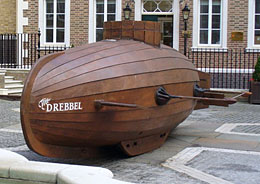
Colin Smith / CC BY-SA 2.0
1620
First Submarine
Dutch physician Cornelis Drebbel builds the world's first submarine. The boat is made of wood reinforced with iron and covered with leather. Inside, 12 oarsmen are seated six on each side. They row with oars that stick out the sides through tight fitting leather sleeves to keep the water out. Drebbel makes several trips in his submarine in the Thames River near London at a depth of up to 15 feet (4.6 meters).
1690

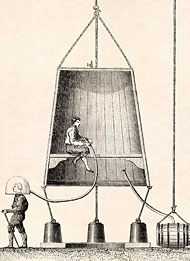
Public Domain Image
1690
First Air-replenished Diving Bell
The English astronomer Edmund Halley develops a diving bell in which the atmosphere in the bell can be replenished by sending weighted barrels of air down from the surface. Each barrel contains a hole in the side that allows water to come in, forcing the air up. The diving bell is also fitted with a window for the purpose of undersea exploration. Dives of up to 90 minutes at depths of 60 feet (18 meters) are recorded.


Wikipedia Public Domain Image
1698
Voyage of Edmund Halley
English astronomer Edmund Halley makes what may be the first scientific voyage to study the variation of the magnetic compass. During his voyages, he makes important contributions to the understanding of the trade winds. Halley also establishes the relationship between barometric pressure and height above sea level. His charts become an important contribution to the emerging field of information visualization.
1710

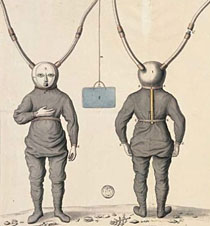
Public Domain Image
1715
First Waterproof Suit
Sir Pierre Rémy de Beauve, a guard in the French Navy, develops one of the oldest known diving suits consisting of a waterproof dress with lead shoes. A metal helmet connected to two hoses allows the diver to breathe air pumped by a bellow at the surface. One hose provides breathable air while the other is used for exhaled air.

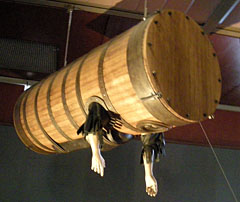
Wikipedia Public Domain Image
1715
First Enclosed Diving Device
Englishman John Lethbridge develops a completely enclosed, one-man diving dress. The device is made from a reinforced, leather-covered barrel of air, equipped with a glass porthole for viewing, and two arm holes with watertight sleeves.
1760

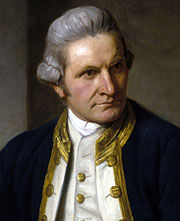
Wikipedia Public Domain Image
August 26, 1768
First Voyage of Endeavour
Lieutenant James Cook leaves the port of Plymouth, England on a voyage to observe a transit of the planet of Venus across the Sun. During this and two voyages to follow, Cook would explore and map the Pacific Ocean. He is the first person to use a chronometer to accurately determine his longitude at sea.
1770

1772
First Practical Diving Helmet
The French scientist Sieur Freminet invents a helmet-hose diving apparatus, in which air is pumped from the surface with an egg-shaped reservoir. The air reaches the diver through a hose attached to the helmet. This system provides a constant supply of air to the diver. With this device, Freminet is able to stay submerged at a depth of 16 meters for up to 1 hour.

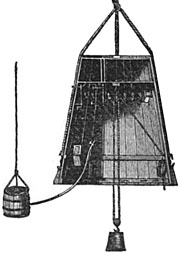
Wikipedia Public Domain Image
1775
Charles Spalding's Diving Bell
British enginner Charles Spalding makes several improvements to Edmund Halley's diving bell design. He believes Halley's design has weaknesses that could pose unnecessary risks for divers. To correct these deficiencies, Spalding adds a system of balance weights to make raising and lowering the bell easier, along with a series of ropes to allow the divers to signal the surface crew.
1780

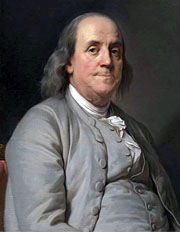
Wikipedia Public Domain Image
1785
Franklin's Sundry Maritime Observations
American patriot and inventor Benjamin Franklin writes a lengthy letter to a scientific colleague in France. Known as his Sundry Maritime Observations, the letter announces the discovery of the Gulf Stream and touches on a wide range of maritime subjects such as ship propulsion methods, hull design, and causes of disasters at sea.

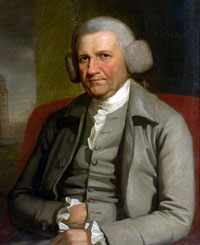
Wikipedia Public Domain Image
1788
Improved Diving Bell
British civil engineer John Smeaton incorporates several improvements to the diving bell. He builds the bell using cast iron and adds an efficient hand-operated pump to sustain the air supply via a hose. An air reservoir system and nonreturn valves to keep air from being sucked back up the hoses when the pump stops. This improved diving bell was used in the construction of Ramsgate harbor in 1774.
1790

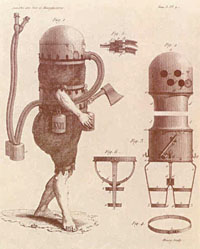
Wikipedia Public Domain Image
1797
First Diving Suit
German mechanic Karl Heinrich Klingert creates a device that is the first to be called a "diving suit”. It consists of a jacket and trousers made of waterproof leather, a helmet with a porthole, and a metal front. It is linked to a turret with an air reservoir. The reservoir cannot replenish itself, so the suit has a limited dive time duration.
1800

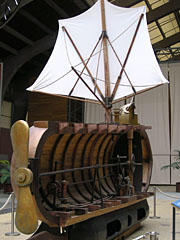
Wikipedia Public Domain Image
1800
The Nautilus
Robert Fulton, inventor of the steamboat, builds an early submarine called The Nautilus. This cigar-shaped craft is made of wood over iron plates, and uses a horizontal rudder to control the up-and-down movement of the submarine. The craft was propelled by a hand-cranked screw propeller. The hollow iron keel served as the vessel's ballast tank, flooded and emptied to change buoyancy.




